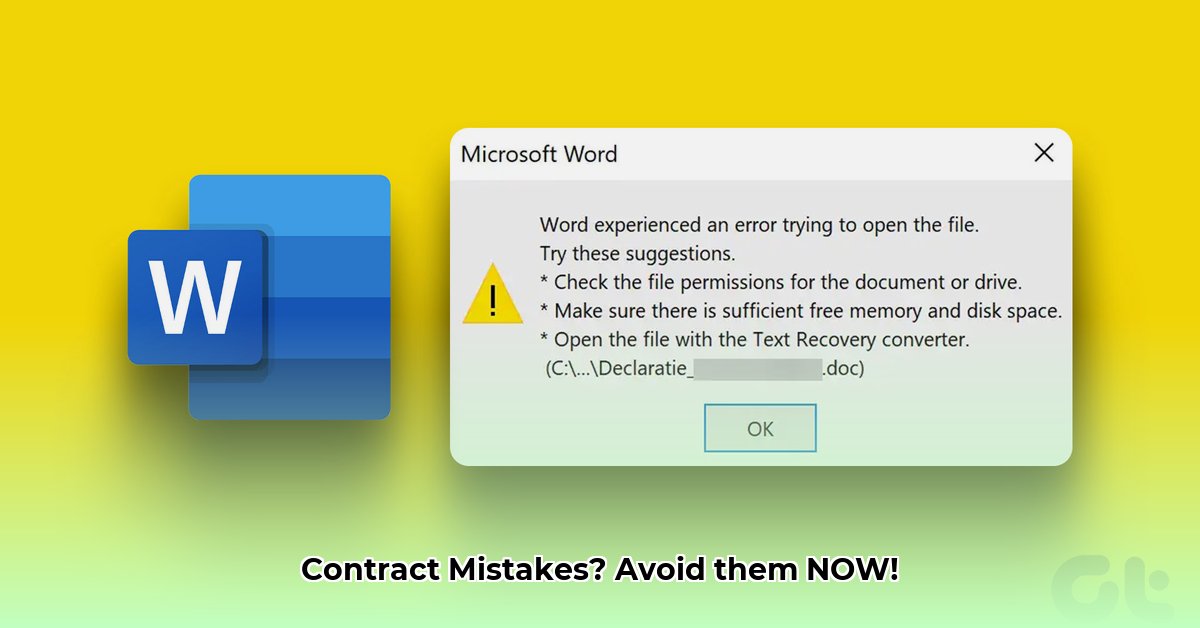
Understanding Error in Negotio and Other Contractual Mistakes
Contracts are the lifeblood of business, yet a simple misunderstanding can lead to costly disputes. This guide focuses on error in negotio (a fundamental mistake about the contract's nature) and other common contractual errors, equipping you with the knowledge to avoid them. We'll explore different error types, their legal implications, and practical steps to protect your interests. Is your contract built on solid ground, or is it a house of cards waiting to collapse? Let's find out.
Types of Contractual Errors
Several types of errors can plague contracts, each with its own legal ramifications. Understanding these distinctions is vital in preventing costly mistakes. Here’s a breakdown:
- Error in Negotio: A fundamental misunderstanding of the contract's nature, where parties are on entirely different pages about what they’re actually agreeing to (e.g., one party believes they're in a sale agreement, the other a lease). This is often fatal to the contract.
- Error in Corpore: A mistake regarding the object of the contract (e.g., misidentifying the property being sold).
- Error in Persona: A mistake about the identity of the other contracting party.
- Error in Substantia: A mistake concerning the quality or substance of the contract’s subject matter (e.g., selling a painting believing it's authentic, when it's a forgery).
Legal Implications: Void vs. Voidable Contracts
The consequences of contractual errors vary. Understanding the difference between void and voidable contracts is paramount:
- Void Contract: A void contract is legally null and void from the outset. It's as if the contract never existed; it's unenforceable. Error in negotio often leads to a void contract.
- Voidable Contract: A voidable contract is initially valid but can be cancelled by one or both parties due to a material defect. Minor errors may lead to a voidable contract. The aggrieved party has a choice to set the contract aside or to allow it to continue.
Did you know? Determining whether an error is material enough to render a contract void or voidable hinges on the specifics of each case, as demonstrated in numerous South African court decisions.
Mitigation Strategies: Practical Steps to Avoid Errors
Proactive steps significantly reduce the risk of costly contractual errors. Here's how:
- Crystal-Clear Communication: Use plain language to ensure everyone understands the contract's terms. Avoid jargon and ambiguity. Open and honest dialogue is key.
- Thorough Review: Carefully read and understand every clause. Don't rush the process! Seek clarification if needed. A second pair of eyes, perhaps a legal advisor, is always beneficial.
- Comprehensive Documentation: Maintain detailed records of all communications, agreements, and amendments. This safeguards your position if disputes arise.
- Legal Counsel: Don't hesitate to consult a South African legal professional, especially for complex contracts or high-value transactions. This preventative measure provides significant protection.
- Don't Sign If You Don't Understand: This is the golden rule. If unsure about any aspect of the contract, seek professional advice before signing.
Case Study: A Real-World Example
Consider two businesses entering a "partnership agreement." One believes it's a joint venture with shared profits and responsibilities. The other interprets it as a franchise agreement, where one licenses its brand. This classic error in negotio highlights the crucial importance of clearly defining the nature of the agreement to avoid a void contract.
Conclusion: Building Strong, Secure Contracts
By implementing these preventative measures and seeking legal expertise when necessary, you significantly minimize the risk of costly contractual errors. Remember, a proactive approach is far more cost-effective and less stressful than battling legal disputes down the line. Building contracts on a foundation of clear communication and legal soundness protects your business and ensures a smoother path forward.